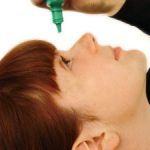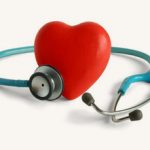Water is a natural necessity
It is essential to consume enough water. But it is also important to respect the water because if the water is life, it can also constrain life and sometimes take it back. We are water. Our body contains an inland sea. Before our birth, we go through a phase (water) as we swim in amniotic fluid.

A two months fetus is composed of over 95 percent water. As an infant, water represents 75 percent of our total weight and at adulthood, it still represents 65 percent of our total weight. From top to bottom we are waterlogged: Our blood and our brains contain more than 80 percent water, 75 percent our muscles, and our skeleton nearly 40 percent.
DEHYDRATION
We lose an average of two liters of water daily through perspiration, respiration, and the elimination exerted by our kidneys. Much more during hot weather, during summer, or during a sustained physical exercise. If we lose the equivalent of 2 percent of our water, we feel the need to drink. At 10 percent, our skin shrinks and we are victims of hallucinations. At 15 percent dehydration, we are in danger of dying… Dehydration is also the source of many evils among which inflammation, thickening of the blood, compaction discs and kidney problems, and much more. Dehydration is insidious. The sensation of thirst occurs late when the water losses are already large.
Therefore drink regularly during the day, even if we do not feel thirsty. At least one and a half liters of low mineral content water, and more than double that amount during hot weather or during a heatwave.
SWIMMER’S OTITIS
The ear wax (cerumen) that builds up naturally in the ears is very useful. It protects the ear canal from moisture and contains a beneficial bacteria for the ear. It’s that bacteria that protect the ears from external otitis which is the most current, usually called (swimming pool otitis) or (swimmer’s otitis) because it is more often diagnosed in children who swim often. Itching inside the ear, clear liquid that flows out, ear pain when moving the head or when the earlobe is pulled and difficulty hearing are all symptoms that characterize swimmer’s otitis. It develops when the inside of the ears remains wet. The skin in the ear canal dry’s out and small cracks are formed.
Bacteria and fungi infiltrate tissues and infect the ear. The infection usually cures itself within one or two days. If there is a pain in the external ear or if there is a purulent discharge, it is best to consult a doctor. Antibiotic drops if required will be prescribed to promote faster healing. To prevent swimmer’s otitis, do not remove the wax from your ears, remove only the wax which is apparent with a washcloth only. After bathing, make sure to dry your ears correctly. While swimming, you can also wear earplugs.
DROWNING
Drowning can happen anywhere at any time. It only takes water: lakes, rivers, ponds, pools, spas, wading pools, or bathtubs. It can occur in very little water, very quickly and very often without a sound. In many cases, only a few centimeters of water is sufficient. An adult should supervise at all times, all children who are in the water or near water, and they should never be left alone in a pool, a spa, or close to a lake, a pond, or a river, even for a brief moment. When the face is submerged, not breathing is voluntarily chosen, then comes the critical time when breathing again becomes imperative and with it follows an involuntary inspiration accompanied by a massive intake of water in the lungs. Lack of oxygen to the brain causes a loss of consciousness and in less than 4 minutes, the heart stops beating. The few first minutes are critical.
The intervention must be quick. If you find yourself in the presence of a drowned person, stay calm. Remove the person from the water. Call quick help by calling 9-1-1. Lie the person on a hard floor or surface. Lay the person down on the side, the leg facing the ground stretched, while the other bent forward. The arm on the ground should be extended forward, the other bent forward. Tilt the person’s head slightly backward so he or she can breathe and make sure nothing is obstructing the airway. Check the breathing and pulse (on the arteries in the neck).
If not breathing, give artificial respiration practice mouth to mouth respiration while pinching the person’s nose and blowing into his mouth at a rate equivalent to 12 to 15 breaths per minute. The volume of each insufflation must allow a victim’s chest to rise. If there is no pulse, couple heart massages with your artificial respiration. Locate the area where you’re supposed to massage, the sternum, the area where the ribs meet at the center of the chest. Place on this area the heel of one of your hands. Perform 15 compressions to 2 mouth to mouth artificial respiration; alternating, until the pulse reappears. Then continue with the same procedure until helps arrives.



